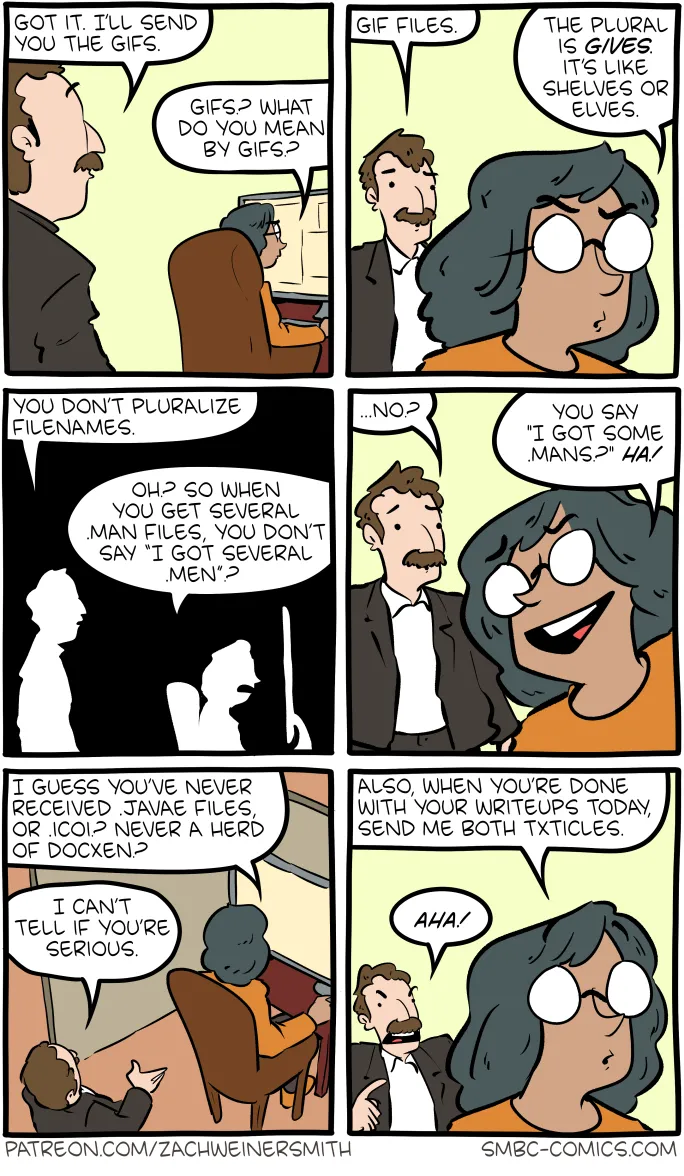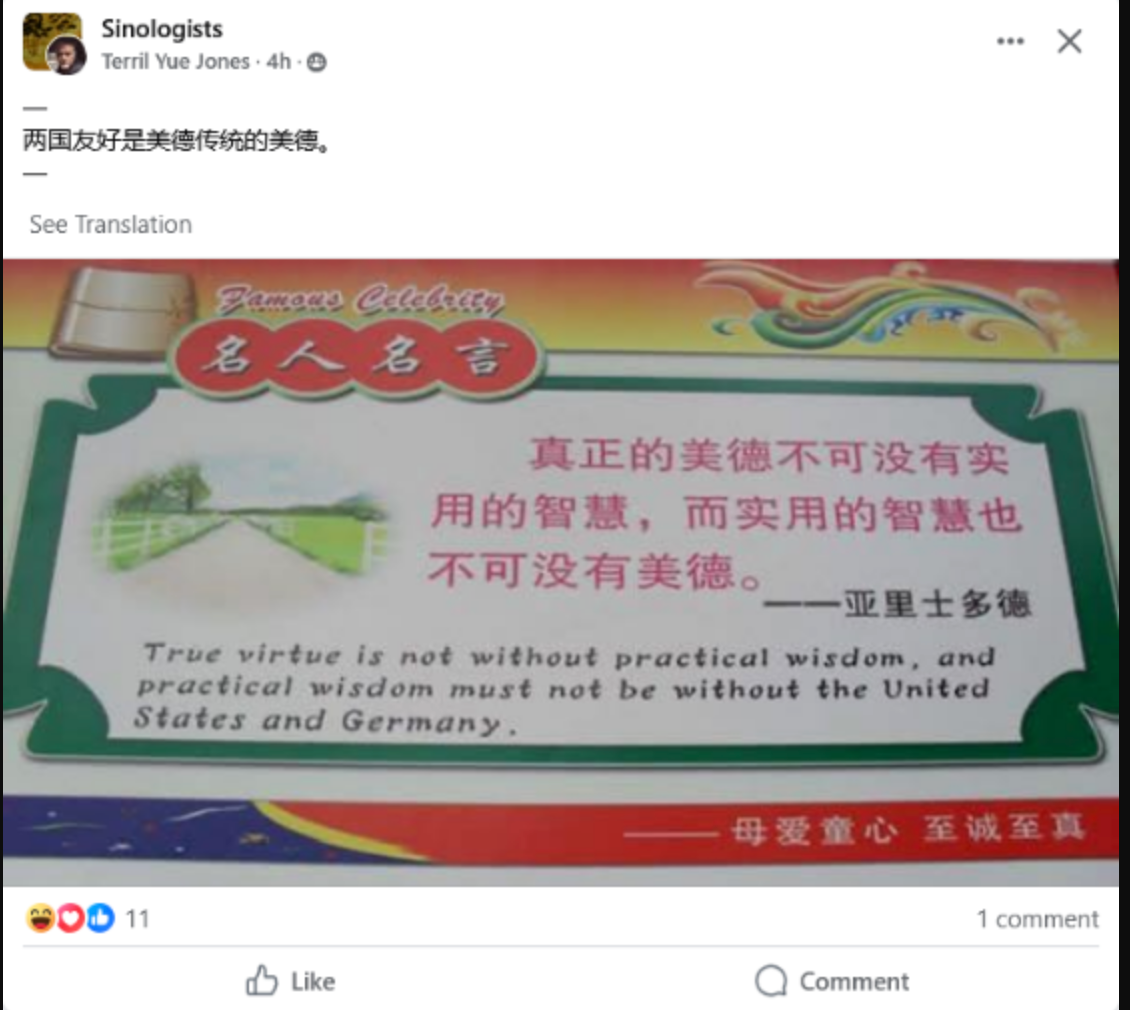Liberate Taiwan
Ignore the super-slow video (if you can! — I watched it a dozen times). Look at what is written on the man's t-shirt.
Read the rest of this entry »
Neuropolitics news
"Authoritarian attitudes linked to altered brain anatomy, neuroscientists reveal", PsyPost 4/19/2025:
A new brain imaging study published in the journal Neuroscience has found that authoritarian attitudes on both the political left and right are linked to specific structural differences in the brain. Young adults who scored higher on right-wing authoritarianism had less gray matter volume in the dorsomedial prefrontal cortex, a region involved in social reasoning. Meanwhile, those who endorsed more extreme forms of left-wing authoritarianism showed reduced cortical thickness in the right anterior insula, a brain area tied to empathy and emotion regulation.
The research aimed to better understand the brain-based traits that might underlie authoritarian thinking. Previous studies have documented the psychological characteristics associated with authoritarianism—such as impulsivity, dogmatism, and heightened sensitivity to threat—but few have examined whether these traits are reflected in brain structure.
The cited paper is Jésus Adrián-Ventura et al., "Authoritarianism and the brain: Structural MR correlates associated with polarized left- and right-wing ideology traits", IBRO Neuroscience 5/24/2025.
Read the rest of this entry »
The burgeoning of Indo-European and the withering of many other languages
"How the World's Largest Language Family Spread – and Why Others Go Extinct." Robinson, Andrew. Nature 641, no. 8061 (April 28, 2025): 31-33.
This is a review of the following three books:
Proto: How One Ancient Language Went Global
Laura Spinney (William Collins 2025)
The Indo-Europeans Rediscovered: How a Scientific Revolution is Rewriting their Story
J. P. Mallory (Thames & Hudson 2025)
Rare Tongues: The Secret Stories of HiddenLanguages
Lorna Gibb (Atlantic 2025)
Read the rest of this entry »
The mathematics of kana vs. kanji usage over time (1879-1968)
In the fourth comment to "Striving to revive the flagging sinographic cosmopolis" (4/26/25), I stated my observation of morphosyllabic kanji usage is that it has been declining over time at the expense of kana and other phonetic elements of the writing system, and I expressed the wish that a quantitative study of the actual usage be carried out. It turns out that we already do have this information, and it is visually evident in these graphs which were called to my attention by Jim Unger.
They are from:
Zusetsu nihongo: Gurafu de miru kotoba no sugata kotoba o hakaru keiryō kokugogaku (Kadokawa ko jiten 9), Hayashi Ōki.
図説日本語: グラフで見ることばの姿 ことばを計る計量国語学 (角川小辞典 9), 林大.
Illustrated Japanese: The appearance of words in graphs, Quantitative Japanese linguistics to measure words (Kadokawa Small Dictionaries), Hayashi Ōki, ed. and comp. (1982), pp. 276-277.
The graphs are derived from a 1969 book by Morioka Kenji on Meiji period language. Both graphs cover the years 1879-1968.
Read the rest of this entry »
Best not to buy cheap audio gear
"Superficial auditory (dis)fluency biases higher-level social judgment." Walter-Terrill, Robert, et al. Proceedings of the National Academy of Sciences 122, no. 13 (March 24, 2025): e2415254122
Significance
Read the rest of this entry »
Mangajin
I am the proud possessor of the complete run of Mangajin (pun for "magazine") from #1-#70 (1988-1997).
 |
Mangajin was the brainchild of Vaughan P. Simmons, whom I had conversations with at several meetings of the Association for Asian Studies (AAS) and corresponded with for a dozen years. I have utmost respect for him as someone who had the vision and fortitude to make a truly effective pedagogical tool for learning Japanese a reality.
I dare say that I learned more Japanese language from Mangajin than from any other single source — just as I learned more Mandarin from Guóyǔ rìbào 國語日報 (Mandarin Daily), the Republic of China newspaper that had furigana-like bopomofo rubi phonetic annotations for all hanzi, than from any other single source.
Read the rest of this entry »
Striving to revive the flagging sinographic cosmopolis
If we take stock of the sinographic cosmopolis at the end of first quarter of the 21st century, it is evident that it is increasingly moribund. Vietnam has jettisoned chữ Hán for the Latin alphabet; North Korea has switched exclusively to hangul; South Korea now uses very few hanja; the Japanese script currently consists of draconically limited kanji, many of which are simplified, often in ways that are different from the simplified characters adopted by the PRC, plus two types of syllabaries and roman letters; the PRC itself now uses radically simplified and limited characters and the Latin alphabet, not to mention that all of the hundreds of millions of students in China learn English, which is a primary index of success for rising in the world of education, and entering sinographs into computers and other digital devices is overwhelmingly accomplished through the alphabet (with resultant amnesia eroding the characters they do learn); while the ephemeral Sinoform scripts of Inner Asia (Tangut, Jurchen, Khitan) disappeared around a millennium ago; Sinitic Dungan speakers write their language in Cyrillic…. For those who are advocates of the sinographic script, naturally all of this would be cause for alarm.
Read the rest of this entry »
Topolect literature
If you do a search across the internet for this term, you will find it used here and there. You will even find the extended expression Topolect Literature Movement (TLM), which is traced back to at least the mid-twentieth century.
For the lexical legitimacy and morphological construction of "topolect literature", see this comment to a previous post:
"Topolect literature" may seem to be a contradiction in terms — fāngyán wénxué 方言文學 ("topolect literature"). On the other hand, "oral literature" is a well-established concept / term in global scholarship, the idea being that this is written literature transcribed / derived from oral sources.
Read the rest of this entry »
The beautiful virtue of the United States and Germany
This photograph of a card in a series on "míngrén míngyán 名人名言" ("famous quotes by famous people") is floating around on Facebook:
Read the rest of this entry »
The magnitude of traditional Chinese literature
Two days ago, I received a big package with three heavy books inside. They were three copies of the following tome:
Routledge Handbook of Traditional Chinese Literature, ed. Victor H. Mair and Zhenjun Zhang (London: Routledge, 2025), 742 pages.
It came as a surprise for, even though we had been working on the handbook for years, I had lost track of when it would actually be published.
Holding the printed and bound work in my hands, the sheer magnitude of what its pages contained began to sink in.
Read the rest of this entry »
Latinized Persian
One of my favorite photographs shows Kemal Ataturk (1881-1938) teaching the alphabet to citizens:

Read the rest of this entry »

